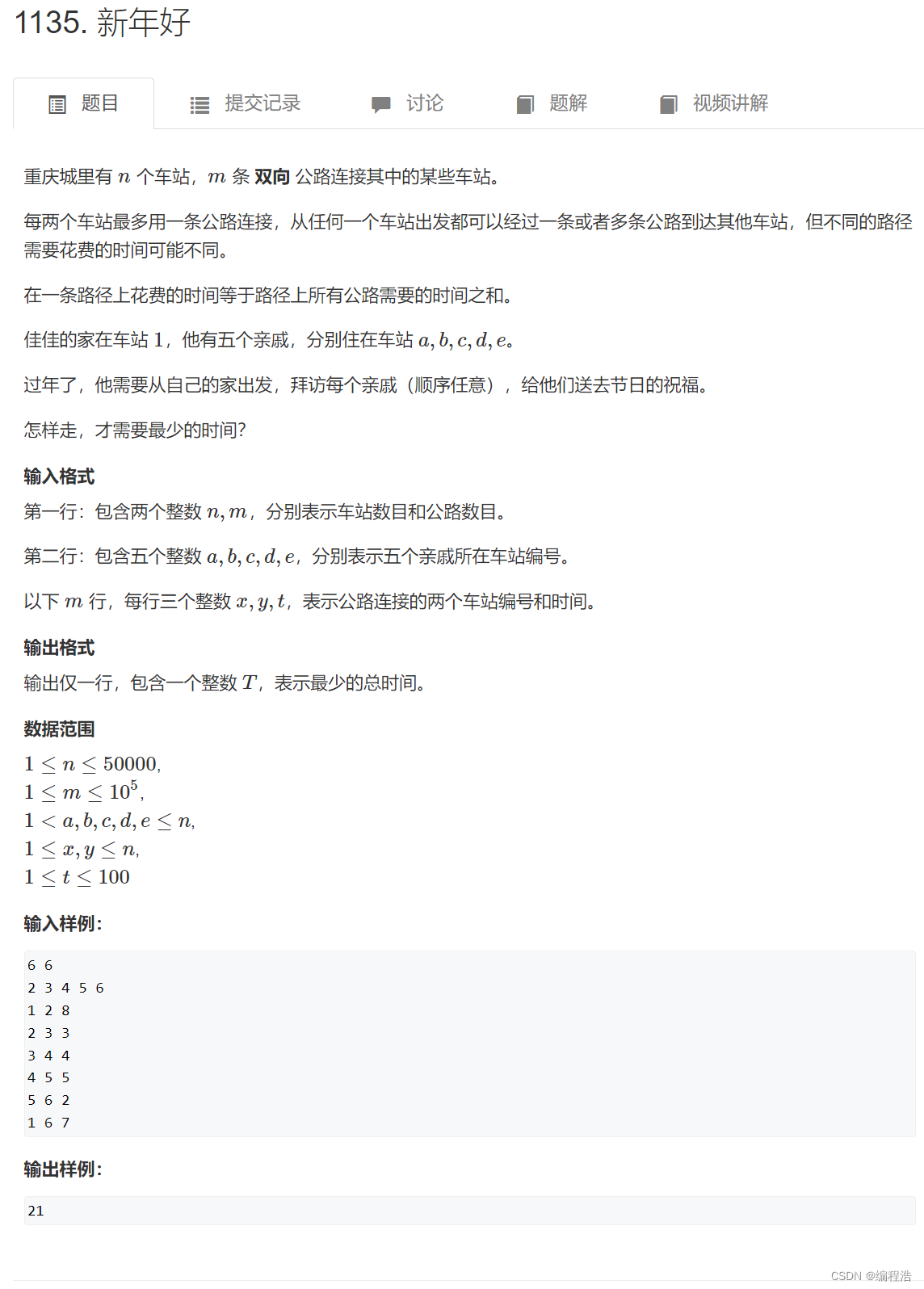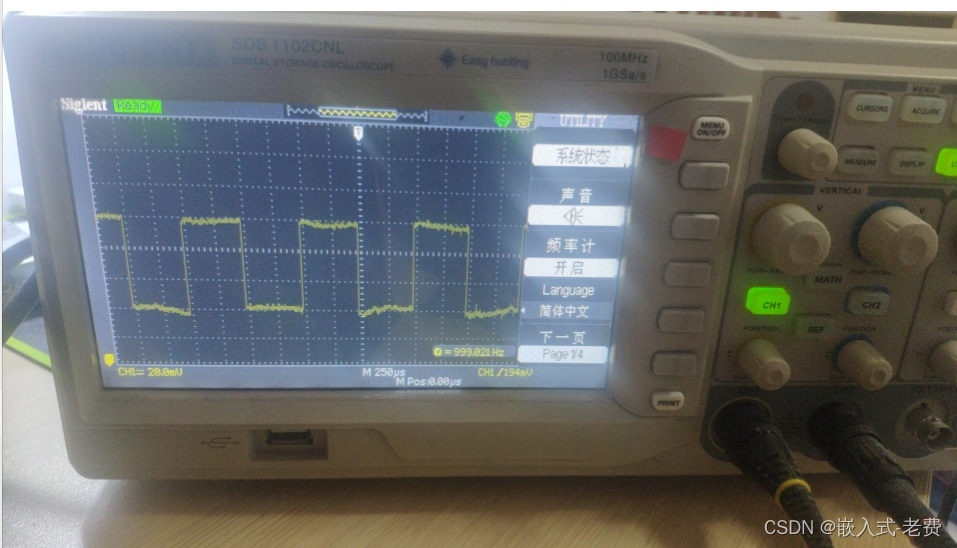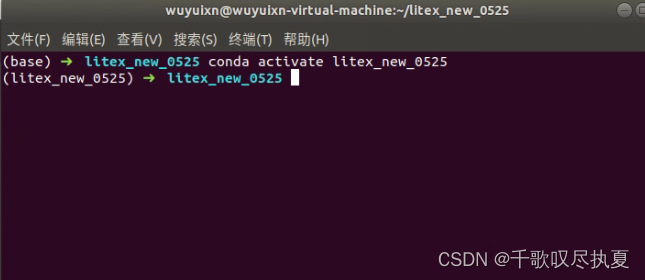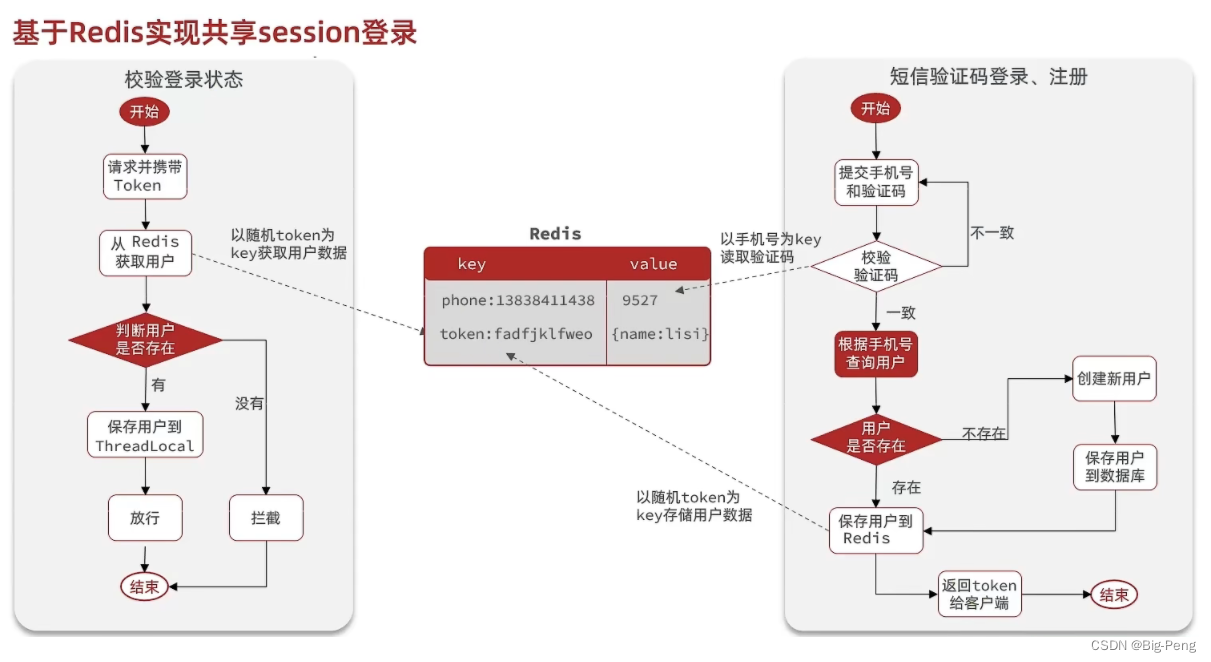专注 效率 记忆
预习 笔记 复习 做题
欢迎观看我的博客,如有问题交流,欢迎评论区留言,一定尽快回复!(大家可以去看我的专栏,是所有文章的目录)
文章字体风格:
红色文字表示:重难点★✔
蓝色文字表示:思路以及想法★✔
如果大家觉得有帮助的话,感谢大家帮忙
点赞!收藏!转发!
新年好
原题链接

一个人去多个点
那么我们首先要知道
所有拜访顺序
利用dfs 全排列出 所有拜访顺序
然后知道两个点之间的最短距离
如果先dfs所有拜访顺序
然后dij两个点之间的最短距离
这样复杂度会很大
可以先dij 六次
每次的根节点是1 2 3 4 5 6
这样就得到了
1到所有点的最短路径
2到所有点的最短路径
3到所有点的最短路径
…
以此类推
#include <cstdio>
#include <cstring>
#include <iostream>
#include <algorithm>
#include <queue>
using namespace std;
typedef pair<int, int> PII;
const int N = 50010, M = 200010, INF = 0x3f3f3f3f;
int n, m;
int h[N], e[M], w[M], ne[M], idx;
int q[N], dist[6][N];
int source[6];
bool st[N];
void add(int a, int b, int c)
{
e[idx] = b, w[idx] = c, ne[idx] = h[a], h[a] = idx ++ ;
}
void dijkstra(int start, int dist[])
{
memset(dist, 0x3f, N * 4);
dist[start] = 0;
memset(st, 0, sizeof st);
priority_queue<PII, vector<PII>, greater<PII>> heap;
heap.push({0, start});
while (heap.size())
{
auto t = heap.top();
heap.pop();
int ver = t.second;
if (st[ver]) continue;
st[ver] = true;
for (int i = h[ver]; ~i; i = ne[i])
{
int j = e[i];
if (dist[j] > dist[ver] + w[i])
{
dist[j] = dist[ver] + w[i];
heap.push({dist[j], j});
}
}
}
}
int dfs(int u, int start, int distance)
{
if (u > 5) return distance;
int res = INF;
for (int i = 1; i <= 5; i ++ )
if (!st[i])
{
int next = source[i];
st[i] = true;
res = min(res, dfs(u + 1, i, distance + dist[start][next]));
st[i] = false;
}
return res;
}
int main()
{
scanf("%d%d", &n, &m);
source[0] = 1;
for (int i = 1; i <= 5; i ++ ) scanf("%d", &source[i]);
memset(h, -1, sizeof h);
while (m -- )
{
int a, b, c;
scanf("%d%d%d", &a, &b, &c);
add(a, b, c), add(b, a, c);
}
for (int i = 0; i < 6; i ++ ) dijkstra(source[i], dist[i]);
memset(st, 0, sizeof st);
printf("%d\n", dfs(1, 0, 0));
return 0;
}



















